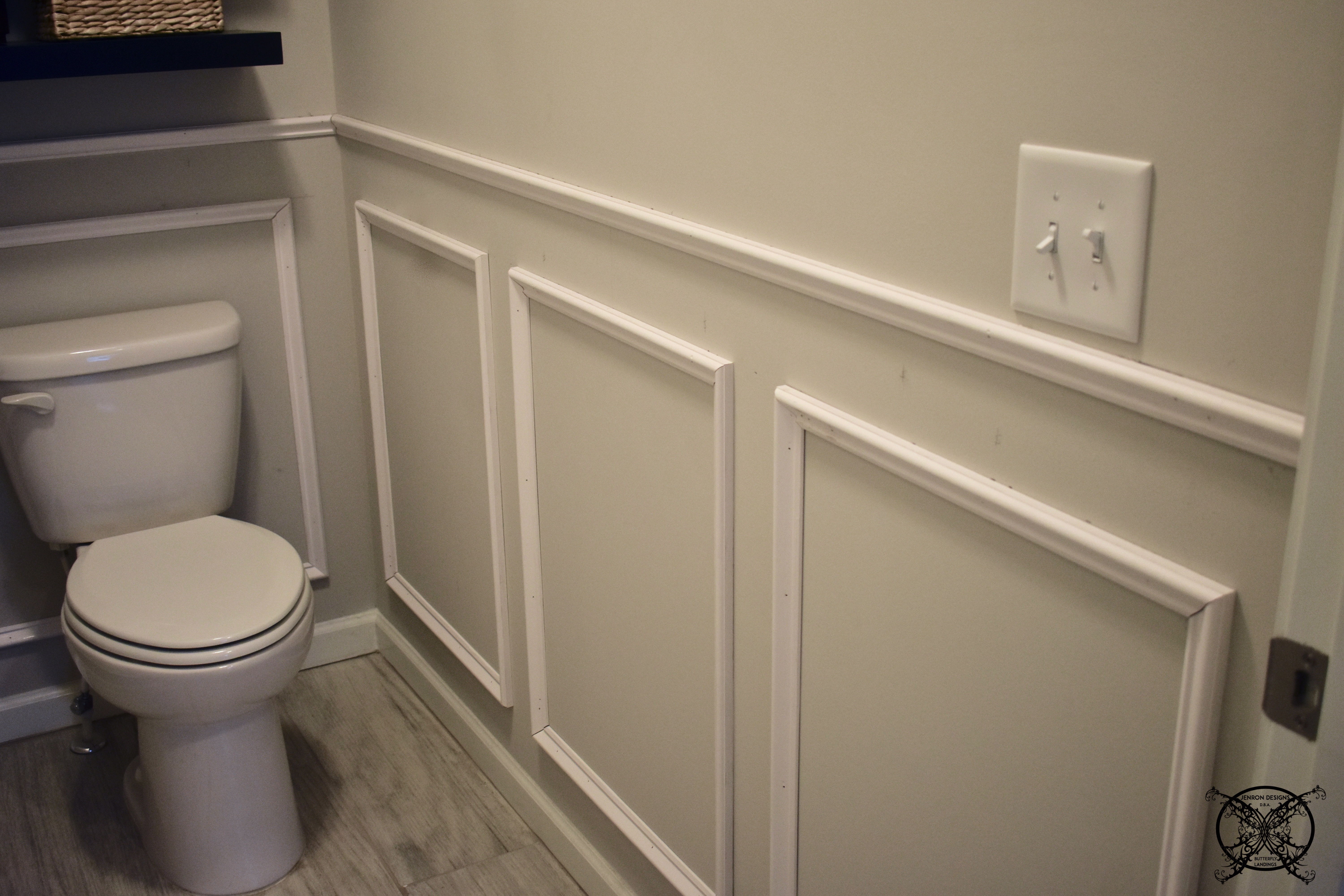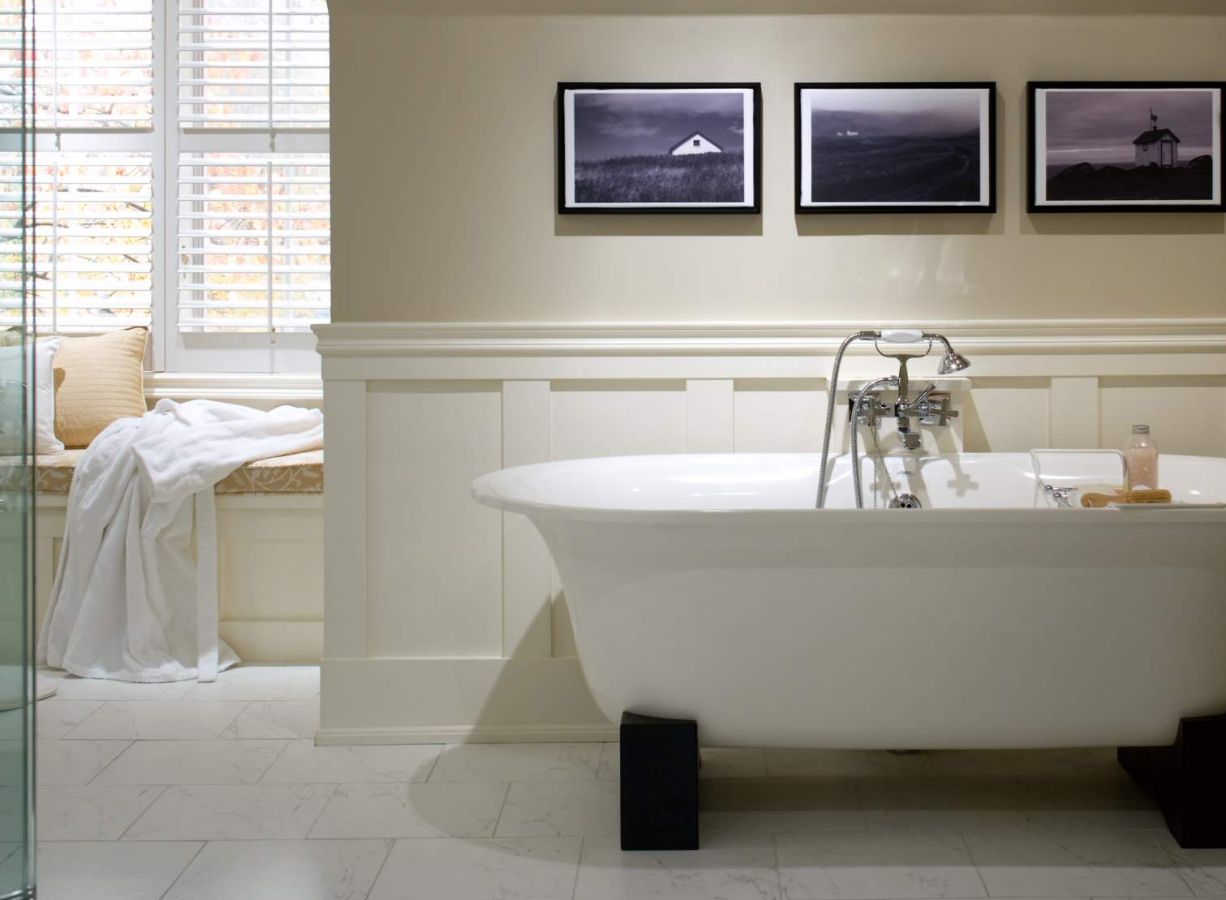Types of Wainscoting for Small Bathrooms

Wainscoting, a decorative paneling that covers the lower portion of a wall, can transform a small bathroom into a stylish and functional space. By adding visual interest and depth, it can make the room feel larger and more luxurious. Choosing the right type of wainscoting is crucial, as it can significantly impact the overall look and feel of the bathroom.
Traditional Paneling
Traditional paneling, characterized by its raised and recessed panels, is a classic choice for wainscoting. This type of wainscoting adds a timeless elegance to any bathroom, creating a sophisticated and formal ambiance.
- Pros: Traditional paneling is durable and can withstand moisture, making it suitable for bathroom environments. It also offers a wide range of design options, with different panel sizes, shapes, and materials to choose from. The raised and recessed panels create a visual texture that adds depth and dimension to the walls.
- Cons: Traditional paneling can be more expensive than other types of wainscoting, especially if you choose solid wood panels. Installation can also be more complex, requiring precise cuts and careful fitting.
- Examples: Traditional paneling can be incorporated into a small bathroom by using it to accentuate a specific wall, such as the wall behind the vanity or the tub surround. It can also be used to create a wainscot effect that extends to the ceiling, adding a sense of grandeur to the space.
Beadboard
Beadboard, known for its simple yet elegant design, features narrow, vertical panels with a bead or groove running along the edges. It offers a clean and contemporary look, making it a popular choice for modern bathrooms.
- Pros: Beadboard is relatively inexpensive and easy to install, making it a budget-friendly option. Its smooth surface is easy to clean and maintain, making it ideal for a high-moisture environment like a bathroom. Beadboard is also available in various materials, including wood, PVC, and MDF, offering flexibility in style and budget.
- Cons: While beadboard is a versatile option, it may not be as durable as traditional paneling. It can also be susceptible to water damage if not properly sealed and installed.
- Examples: Beadboard can be used to create a wainscot effect that extends to the ceiling, creating a seamless look. It can also be incorporated into a small bathroom by using it to accentuate a specific wall, such as the wall behind the vanity or the tub surround. To add a touch of elegance, consider painting the beadboard in a contrasting color to the walls.
Shiplap
Shiplap, a type of wood paneling with overlapping boards, has gained popularity in recent years for its rustic charm and modern appeal. Its simple yet distinctive design adds a touch of farmhouse style to any bathroom.
- Pros: Shiplap is relatively easy to install and can be found in various materials, including wood, PVC, and MDF. Its durability and moisture resistance make it a suitable option for bathrooms. The overlapping boards create a unique visual texture that adds depth and dimension to the walls.
- Cons: Shiplap can be more expensive than beadboard, especially if you choose solid wood panels. It can also be more challenging to install than beadboard, requiring careful alignment of the boards.
- Examples: Shiplap can be used to create a wainscot effect that extends to the ceiling, creating a modern and rustic look. It can also be incorporated into a small bathroom by using it to accentuate a specific wall, such as the wall behind the vanity or the tub surround. Consider painting the shiplap in a contrasting color to the walls to create a striking visual effect.
Styling Wainscoting in Small Bathrooms

Wainscoting in small bathrooms is more than just a decorative element; it’s a strategic design tool that can elevate the space’s visual appeal and functionality. By thoughtfully selecting colors, trim details, and integrating it with other design elements, you can create a bathroom that feels spacious, stylish, and personalized.
Color Choices for Wainscoting in Small Bathrooms
Color plays a crucial role in shaping the perception of space. In small bathrooms, lighter colors generally make the room feel larger.
- White or Off-White: These classic choices reflect light, creating an airy and spacious ambiance. They also provide a neutral backdrop for bolder accents and accessories.
- Soft Pastels: Pale blues, greens, or yellows can add a touch of color without overwhelming the space. They can also create a calming and serene atmosphere.
- Darker Accents: If you want to create a dramatic or modern look, consider using a darker wainscoting color, such as navy blue or charcoal gray. This can be paired with lighter walls to create visual contrast and make the space feel more intimate.
Trim Details for Wainscoting in Small Bathrooms, Wainscoting ideas small bathrooms
The trim details around the wainscoting can significantly impact its overall look and feel.
- Simple and Clean: For a minimalist aesthetic, opt for simple, straight lines and minimal ornamentation. This can create a sleek and modern look, especially in smaller bathrooms.
- Detailed and Ornate: If you prefer a more traditional or elegant style, consider using intricate trim details, such as crown molding, chair rails, or beadboard. These can add visual interest and create a sense of grandeur.
- Matching Trim: To create a cohesive look, choose trim that complements the wainscoting color and style. For example, if you have white wainscoting, you can use white trim to create a clean and seamless look.
Integrating Wainscoting with Other Design Elements
Wainscoting can be seamlessly integrated with other design elements to create a cohesive and stylish bathroom.
- Wallpaper: Consider using a patterned wallpaper above the wainscoting to add visual interest and personality to the space. Choose a wallpaper that complements the wainscoting color and style. For example, a floral wallpaper could pair well with a white or pastel wainscoting.
- Tile: Wainscoting can be used to create a visual transition between different tile finishes. For example, you could use wainscoting to separate a tiled shower area from the rest of the bathroom.
- Mirrors: Mirrors can be strategically placed to reflect light and create the illusion of more space. Consider placing a mirror above the wainscoting to draw the eye upward and make the bathroom feel taller.
Maximizing Space with Wainscoting: Wainscoting Ideas Small Bathrooms
Wainscoting, a decorative paneling that covers the lower portion of a wall, can be a powerful tool for enhancing the visual perception of space in a small bathroom. By strategically incorporating wainscoting, you can create an illusion of greater size and a more balanced layout.
Selecting the Right Height and Width
The height and width of wainscoting play a crucial role in maximizing the perceived space in a small bathroom. The key is to strike a balance between creating a visually appealing feature and avoiding a sense of claustrophobia.
- Height: Generally, a wainscot height of approximately 36 inches (91 cm) is ideal for most small bathrooms. This height allows for a sense of visual expansion without overwhelming the space. Consider using a higher wainscot if you have tall ceilings, as it can create a more balanced proportion.
- Width: Opt for wainscot panels that are wider than narrower. This creates a sense of openness and spaciousness. Wider panels can visually enlarge the space by minimizing the number of seams and creating a more seamless look.
Influence of Wainscoting Designs on Space Perception
Different wainscot designs can have a significant impact on how a small bathroom is perceived. Here’s a table outlining how specific designs can influence the visual size and layout:
| Wainscoting Design | Effect on Space Perception |
|---|---|
| Horizontal Wainscoting | Creates a sense of visual width, making the space feel larger and more expansive. |
| Vertical Wainscoting | Adds height to the space, making the ceiling appear higher. This can be particularly beneficial in bathrooms with low ceilings. |
| Geometric Wainscoting | Introduces visual interest and complexity, which can help to break up the monotony of a small space. |
| Detailed Wainscoting | Can create a sense of grandeur and sophistication, adding a touch of elegance to the space. |